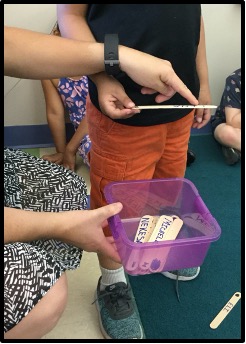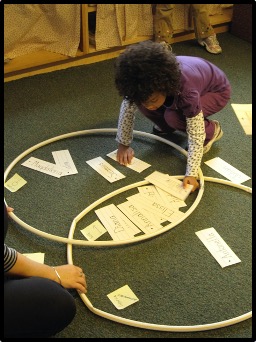Sharing at Morning Meeting validates children’s life experiences as it supports speaking and listening skills and builds connections and community. Sharing can happen in many ways – from simple “stand up – sit down” games to opportunities for children to share personal news and stories. There are many Learning Activities that are also Sharing Activities, such as Venn Diagrams.
In order for sharing to be successful, teach children:
- Speaking and audience skills
- The silent connection (same-same) signal
- How to ask respectful questions
- How to make meaningful comments
There are many different equitable ways to have children share – ways that give each child a chance during a week. Most young children cannot sustain listening to more than a few shares at each meeting, therefore, sharing requires systems to provide and track turns and careful planning to help them become good listeners and appreciate their peers.
- Make a weekly sharing schedule
- Use share sticks (popsicle sticks-put aside when they have a turn)


Examples of Sharing Opportunities
- One Word Sharing – “Do you like apples or bananas?” or “What kind of pizza do you like?”
- Stand Up – Sit Down – “Stand up if you are wearing green.”
- Just Like Me! – someone shares something they like, and others say “just like me” if they share that experience or preference.
- Two Stars and a Wish – give feedback on an activity or a piece of student work. Children give two positive statements (stars) and one ‘how to make it better’ (wish).
- Sharing Work – This is very effective right before choice time or right after choice time.
- Author’s Circle – Journal shares
- Sharing Information related to the curriculum – “Tell us, who are the members of your family.” (during of study on families).
- Open Sharing – Sharing Personal Stories
- Storytelling Story Acting
- See more ideas in “Games and Learning Activities” below.
A Shift from Show and Tell: We do not advise doing “show and tell” of home items such as toys as these can generate property disputes and are often more interesting for the sharer than the audience. Instead, use classroom learning and experiences to reinforce content, routines and build community.